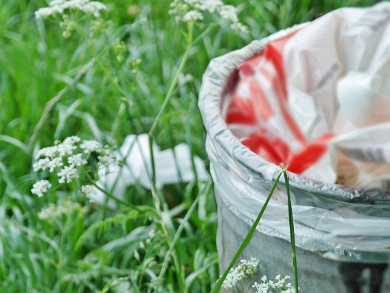Polyethylene terephthalate (PET) is a polymer commonly used, e.g., in bottles. Since it is produced in large volumes, PET waste is an important challenge for the environment. Bacteria such as Ideonella sakaiensis could help to solve this problem. The microbe can hydrolyze PET and, thus, break it down and convert it to soluble compounds. Enzymes called PET hydrolases (PETases) are responsible for this ability.
Rey-Ting Guo, Tianjin Institute of Industrial Biotechnology, Chinese Academy of Sciences, and colleagues have studied crystal structures of PETase enzymes and their complexes with reactants and products to understand the mechanism by which the enzymes hydrolyze PET. The team produced and purified a number of variants of a PETase, which were then crystallized using the sitting-drop vapor-diffusion method and characterized using X-ray crystallography. The activity of the enzyme variants was tested with a PET film as a substrate. The team used high-performance liquid chromatography (HPLC) to analyze the products. Complexes of model substrates or products with variants of the enzyme were also crystallized and studied.
The researchers found that the substrate is bound in a shallow cleft in the protein surface. The enzyme contains a disulfide bridge that links the loops that bear the catalytic acid and base. This disulfide group was found to be important for the enzyme’s catalytic activity; its disruption led to a loss of activity. Residues in the active site which are particularly important for binding the substrate were also identified. According to the team, these results could be useful for the further engineering of PETases for use in the bioconversion of plastics.
- Structural insight into catalytic mechanism of PET hydrolase,
Xu Han, Weidong Liu, Jian-Wen Huang, Jiantao Ma, Yingying Zheng, Tzu-Ping Ko, Limin Xu, Ya-Shan Cheng, Chun-Chi Chen, Rey-Ting Guo,
Nat. Commun. 2017.
https://doi.org/10.1038/s41467-017-02255-z




